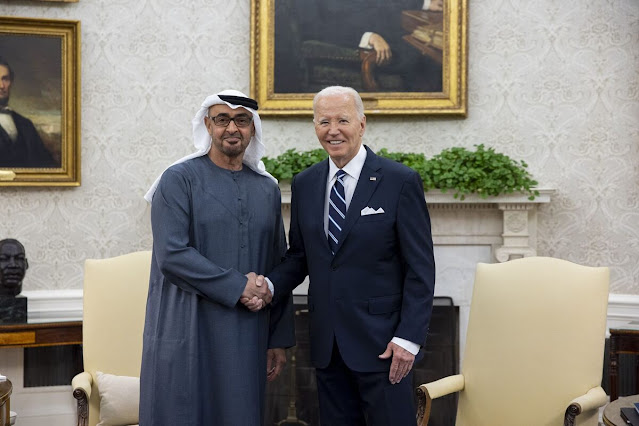The Shifting Political Landscape of the Rust Belt: How Trump Redefined Loyalties
The Shifting Political Landscape of the Rust Belt: How Trump Redefined Loyalties
An Inside Look at the Surprising Union Voter Migration from Democrats to Republicans
In a unionized steel mill parking lot nestled in western Pennsylvania, an unusual social experiment unfolded. Bumper stickers became the canvas for a political mosaic, and what emerged was a revelation that defied conventional wisdom. Despite the historical alliance between unions and the Democratic Party, the asphalt sea of stickers told a different story. Among the QAnon symbols and Back the Blue flags, one name reigned supreme: Donald Trump.
The Unexpected Exodus
The narrative that unfolded before us pointed to a startling shift: industrial union members in America's shrinking manufacturing hubs were forsaking their decades-old loyalty to the Democratic Party in favor of the Republican camp.
Unveiling the Secrets
These stickers weren't hidden, clandestine symbols of rebellion. They were boldly displayed for all to see, signifying a change that even longtime union members wouldn't have accepted in the past. This transition, its complexity, and the compelling reasons behind it were meticulously documented in a senior thesis by Lainey Newman, guided by her mentor, Theda Skocpol. Now, this exploration has evolved into the thought-provoking book, Rust Belt Union Blues: Why Working-Class Voters Are Turning Away from the Democratic Party.
A Resurgence of Labor
As organized labor once again takes center stage, with headlines dominated by events like the United Auto Workers' strike at major US automakers and the battle for the former industrial behemoth, US Steel, Donald Trump is rekindling his courtship of union voters. In a recent appearance on ABC's This Week, Reihan Salam, president of the Manhattan Institute, highlighted Trump's efforts to connect with UAW members, particularly regarding the transition away from combustion engine vehicles.
The Broken Bond
Reflecting on this phenomenon, Newman notes that the decline in Democratic support among union members has been brewing for a while. The Democratic Party, she argues, took unions for granted, neglecting the crucial investment needed to maintain the trust and alliances between rank-and-file laborers and the Democrats.
A Bond Once Forged in Steel
In the heyday of the Rust Belt, the union-Democrat alliance was as sturdy as the steel crafted by union hands across western Pennsylvania. Yet, the subsequent transformations have been profound, aptly summarized in one of Newman and Skocpol's chapter titles: From Union Blue to Trump Red.
Unions' Changing Role
To grasp these changes, Newman and Skocpol delved into the broader transformations sweeping the Rust Belt, particularly in western Pennsylvania. With their Rust Belt roots, they were uniquely positioned to delve into the fabric of these communities.
A Fading Legacy
Union halls that once hosted weddings and retirement parties now stand abandoned, their legacy fading. As the steel industry imploded in the 1970s and 80s, cinemas and shoe stores shuttered alongside the union halls.
A New Landscape
Not all union members deserted western Pennsylvania, but the conditions of their employment had irrevocably altered. Blue-collar workers, once unified under union banners, now found refuge in conservative social organizations. Gun clubs thrived on a strong hunting tradition, while megachurches sprung up to fill the void left by closing local churches.
The Tea Party Surge
The region also became a hotbed of Tea Party activity, rallying against the Obama administration, a phenomenon studied by Skocpol on a national scale.
A Presidential Pivot
In 2016, the political landscape of western Pennsylvania saw a seismic shift as Donald Trump and Hillary Clinton crisscrossed the region. Their differing destinations and messages underscored the growing divide.
A Promise Delivered?
Trump's vow to restore American steel resonated in places like Monessen, contrasting starkly with Clinton's stance on coal. As president, Trump imposed tariffs on aluminum and steel imports in 2018, a move met with mixed reactions.
The Road Ahead
This exploration isn't intended to vilify unions or the Democratic Party. Democrats have begun taking positive steps to address the rightward shift among union members, but the landscape has undeniably changed.
A Shifting Political Terrain
As we navigate the ever-evolving political landscape of the Rust Belt, one question looms large: can Trump's promises endure? Will he deliver on his ambitious pledges if reelected? The answer to these questions will undoubtedly shape the future of this region and American politics at large.
Rust Belt Union Blues is now available from Columbia University Press, providing a comprehensive look at this transformative journey.



Comments
Post a Comment